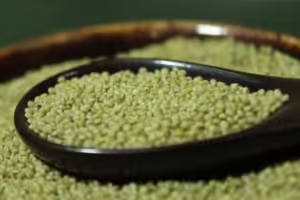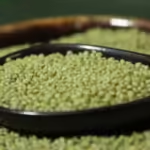Introuction
In the realm of grains, millets stand out for their incredible diversity and nutritional benefits. These tiny but mighty grains have been cultivated for thousands of years and have sustained populations across the globe. While some varieties are more commonly known as major millets, others, often referred to as minor millets, are gaining recognition for their health-promoting properties and culinary versatility. Let’s delve into the world of millets, exploring both the major players and the lesser-known gems.
The Major Millets: Powerhouses of Nutrition
1. Pearl Millet (Bajra):
– Cultivated in regions with arid and semi-arid climates, pearl millet is a staple in many parts of Africa and the Indian subcontinent.
– Rich in iron, protein, and fiber, pearl millet is celebrated for its ability to thrive in harsh environments and provide sustenance to millions.
– Commonly used in flatbreads, porridges, and as a base for alcoholic beverages, pearl millet is a versatile grain with a robust flavor profile.
2. Foxtail Millet (Kangni):
– Originating in China, foxtail millet has gained popularity worldwide for its exceptional nutritional content.
– High in antioxidants, magnesium, and phosphorus, foxtail millet is lauded for its role in promoting heart health and aiding digestion.
– Its mild, nutty flavor makes it a delightful addition to salads, pilafs, and even desserts, offering a nutritious alternative to refined grains.
3. Proso Millet (Common Millet):
– Widely cultivated in Eurasia and North America, proso millet is known for its resilience and adaptability to diverse climates.
– Packed with essential nutrients such as B vitamins, calcium, and potassium, proso millet supports overall health and well-being.
– Its subtle, earthy taste lends itself well to soups, stews, and as a substitute for rice in various dishes.
Unveiling the Gems: Minor Millets with Major Benefits
1. Finger Millet (Ragi):
– Hailing from Africa and Asia, finger millet is a nutritional powerhouse often overshadowed by its major counterparts.
– Exceptionally high in calcium, fiber, and amino acids, finger millet is a boon for bone health and protein intake.
– From traditional porridges to modern energy bars, finger millet is making a resurgence in global cuisines, catering to health-conscious consumers.
2. Barnyard Millet (Sanwa):
– Native to India, barnyard millet is gaining recognition for its gluten-free status and low glycemic index.
– Rich in antioxidants and micronutrients, barnyard millet offers a sustainable source of nutrition while supporting blood sugar management.
– Its light, fluffy texture makes it a delightful alternative to rice or couscous in pilafs, stir-fries, and salads.
3. Little Millet (Kutki):
– Cultivated in India and parts of Africa, little millet is a resilient grain celebrated for its drought tolerance and short growing cycle.
– Packed with dietary fiber, vitamins, and minerals, little millet promotes digestive health and aids in weight management.
– Its nutty, slightly sweet flavor pairs well with both savory and sweet dishes, making it a versatile addition to any culinary repertoire.
Embracing Diversity for Health and Sustainability
As we embrace a more diverse and sustainable approach to food production and consumption, millets emerge as champions of nutrition, resilience, and culinary creativity. Whether major or minor, each variety offers a unique set of benefits that contribute to our overall well-being and the health of the planet.
By incorporating millets into our diets, we not only nourish our bodies but also support local farmers and biodiversity conservation efforts. From comforting porridges to gourmet delicacies, millets have the potential to revolutionize the way we eat and live, one tiny grain at a time.
Let’s celebrate the diversity of millets and savor the abundance of flavors and nutrients they have to offer. Whether you’re exploring ancient traditions or experimenting with modern recipes, millets invite us on a journey of discovery, health, and sustainability.







